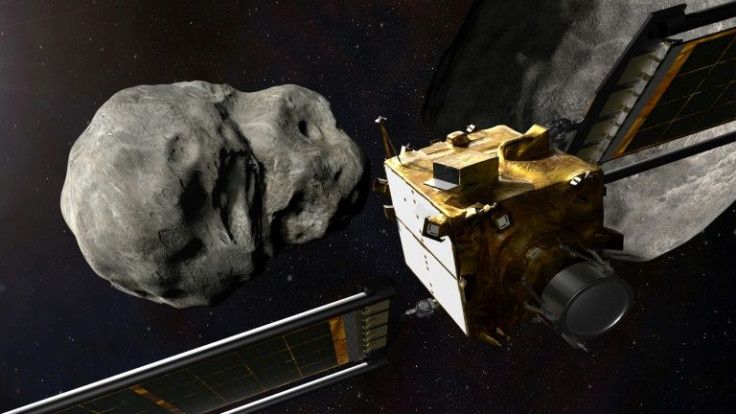DART Mission: How To Watch NASA Crash A Spacecraft Onto An Asteroid
KEY POINTS
- NASA is set to deliberately crash a spacecraft onto an asteroid Monday
- There are several channels through which people can watch the event live
- Some may even want to host a watch party for the "history in the making"
NASA is about to crash a spacecraft onto an asteroid for the "first-ever" asteroid deflection demonstration via impact. We may be far away from the action, but people can still tune in to the momentous event.
It is estimated that there are tens of thousands of near-Earth asteroids that are big enough to cause substantial "devastation" if they end up hitting the Earth. This is why "real-world" testing of planetary defense systems is so important, according to scientists.
Enter the Double Asteroid Redirection Test (DART) mission. Launched on Nov. 24, 2021, the DART spacecraft has been headed for the binary asteroid system consisting of Didymos and the smaller Dimorphos. Car-sized DART is set to crash onto Dimorphos Monday to try and see if doing so could actually change its course.
To be clear, Dimorphos isn't a threat to the Earth, and neither would the impact set it on a collision course with our planet. It is, however, an excellent way to test kinetic impact as a way to protect the planet should the threat arise in the future.
Does an asteroid crashing into Earth ever keep you up at night?
— Senate Commerce Committee (@commercedems) September 24, 2022
On Monday, @NASA DART spacecraft will smash into an asteroid at 14,000+ MPH. Why? To push it off course & prove the technology that could one day save us from a potentially deadly asteroid.https://t.co/QlDL52aJpl
Those who would like to watch the event may do so via several channels. On the impact day, live coverage will be available on NASA TV, the agency's website, as well as its Facebook, Twitter and YouTube channels. It will also be streamed via the European Space Agency's (ESA) Web TV.
Just 1⃣ more day! DART will become the first-ever space mission to demonstrate #asteroid deflection by kinetic impactor. Are you ready to watch history in the making? 💥🛰️
— NASA Asteroid Watch (@AsteroidWatch) September 25, 2022
Watch @NASA's #DARTMission LIVE tomorrow at 6pm ET. ▶️➡️ https://t.co/CRmd7X4Ku1@NASASolarSystem @JHUAPL pic.twitter.com/QMQ3YP98ym
Johns Hopkins University Applied Physics Laboratory has even shared quite a few tips on how to plan a watch party for the event. Its watch party kit includes links to both the main broadcast, as well as the camera feed from DART's Didymos Reconnaissance and Asteroid Camera for Optical navigation (DRACO) instrument.
It also includes the hashtags people can use during online discussions, as well as other fun DART-related activities like a DART AR experience and 3D printable spacecraft and asteroid models.
For now, while waiting for the event, people can enjoy some of the images DART has captured while on its way to its target. For instance, it captured the image below in July, when it was still about 20 million miles away from the system.
DART sets sights on asteroid target ☄️🛰️@NASA's #DARTMission spacecraft recently got a first look at Didymos and its asteroid moonlet, Dimorphos. On Sept. 26, DART will intentionally impact Dimorphos to change its speed & orbit.
— NASA Asteroid Watch (@AsteroidWatch) September 7, 2022
Learn more: https://t.co/xFtJdCEdkL pic.twitter.com/AjDtr0V2ZS
NASA also shared Saturday the image of Earth and the Pleiades star cluster as captured by DART's "mini photographer," the Light Italian CubeSat for Imaging Asteroids (LICIACube) instrument, which deployed from DART on Sept. 11.
"On Monday, LICIACube will fly past Dimorphos about three minutes after DART impacts. The CubeSat's goals are to confirm the spacecraft impact, observe the evolution of the ejected plume, potentially capture images of the newly formed impact crater, and image the opposite hemisphere of Dimorphos that DART will never see," NASA noted.
The ESA's deep space network will also be tracking the impact. And in 2024, the ESA's Hera mission will be launched to have a closer look at the "crime scene" of the impact.

© Copyright IBTimes 2024. All rights reserved.






















